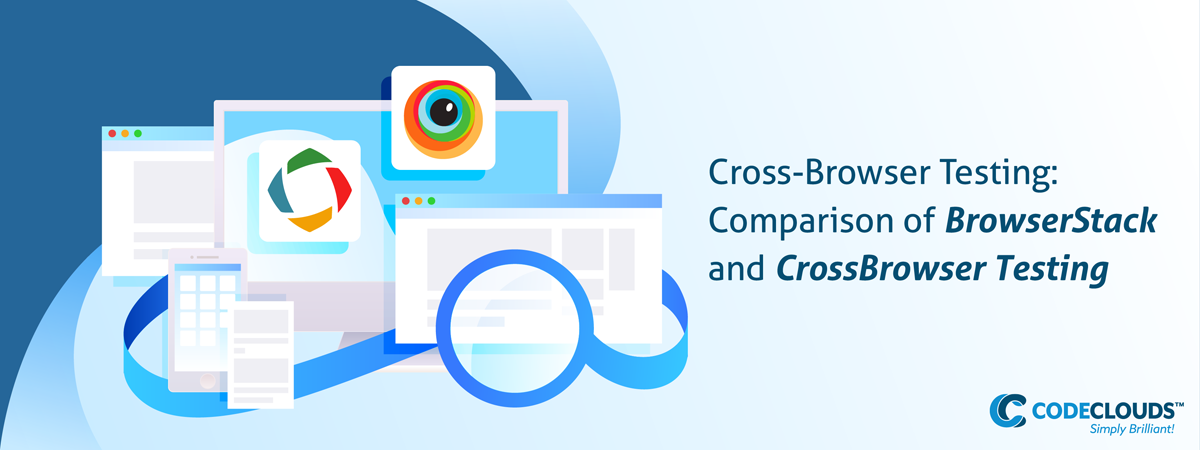Overview
Cross-browser testing is very important to ensure maximum compatibility of your web pages; we’ve all heard the web developer’s death cry: but it worked on my machine! Two of the most popular choices – Browserstack and CrossBrowserTesting.com, are the top pick for many people. While both have very similar characteristics, the differences in available features are the most important
When developing a new website, it’s important to make sure that it is supported by all browsers. Cross-Browser testing is a method of testing that involves examining the UI and functionality of websites in different browsers and devices, without having to switch through a dozen devices and browsers. In this article, we compare two cross-browser testing services for you to see which one will best fit your needs: Browserstack or CrossBrowserTesting.com.

Before we begin, you might want to check up some key software testing terminology, and if you’ve got any questions about how you can make your website the best it can be, don’t be afraid to drop us a line.
A Few Factors in Common
Between these two tools, CrossBrowserTesting has been on the market much longer than BrowserStack. However, both have some similarities. Both service providers have free versions (though CrossBrowserTesting is limited to only 7 days) and both have service rates that start at $29 per month.
Both of these tools include unlimited live testing, screenshots, responsive testing features, email support, and an FAQ and information repository for DIY troubleshooters. Both service providers also offer support for Android and iOS platforms. However, these tools lack a couple of features that their competitors have, such as the ability to record videos or Live Support.
A Few Differences
Let’s focus on the differences between the two. In terms of the number of browsers supported, CrossBrowserTesting has a slight lead with 750 against Browserstack’s 700. CrossBrowserTesting provides a couple of additional features compared to the BrowserStack’s basic plan which is a plus point for this tool. For example, 150 minutes of automated testing per month which can be rolled over to the next month, if unused, and API access for taking the screenshots. However, Browserstack has custom screen resolution options and its competitor in this comparative analysis does not offer it. Despite the lack of Live Support by both companies, Browserstack gains a lead in terms of customer service by having a dedicated 24/7 customer support option.
Browserstack also offers free JavaScript unit tests for open-source projects, as well as Selenium integration. CrossBrowserTesting.com, on the other hand, offers free manual testing if you are working on projects in CodePen. Fans of Browserstack rave about the huge variety of operating systems, browsers, and devices (more than 200 combinations) that it can offer. Meanwhile, advocates of CrossBrowserTesting praise its ability to use real physical devices for performing live, manual tests, and Android and iOS devices for automated tests—you’re not simulating the browser or device, you’re actually testing on an instance of it.
The CrossBrowser Problem
CrossBrowserTesting is slow. Really slow. By using actual devices, it manages to capture a more accurate picture of what performance is really going to look like, but it suffers in both speed and stability departments. It doesn’t work with Selenium as well as claimed either—they aren’t sponsors of the Selenium project, and it’s not as well-integrated as their docs say. Their documentation generally is pretty bad: it’s filled with errors, and even when it’s on-track it can be confusing or misleading.
The BrowserStack Incident
In 2014, a hacker (never identified, but believed to be a disgruntled employee) send out an email to all BrowserStack users outlining the platform’s security issues, namely that all passwords were stored in plaintext, that all BrowserStack virtual machines had the same password (also stored in plaintext) and that the entire infrastructure had the same password (also stored in plaintext).
It’s been a few years and BrowserStack claim to have thoroughly overhauled their security in the interim, but it shattered a lot of users’ faith and remains a major stain on their reputation.

The 411
Both of these platforms are relatively solid, but not free of issues. CrossBrowserTesting is a juggernaut—a slow, unstable, but extremely powerful platform that will get you a precision that you can’t get elsewhere. BrowserStack is a lot more stable and approachable, but understandably some users are skeptical about their ability to keep their front door locked.
Share this article
245 reads
Similar Reads








